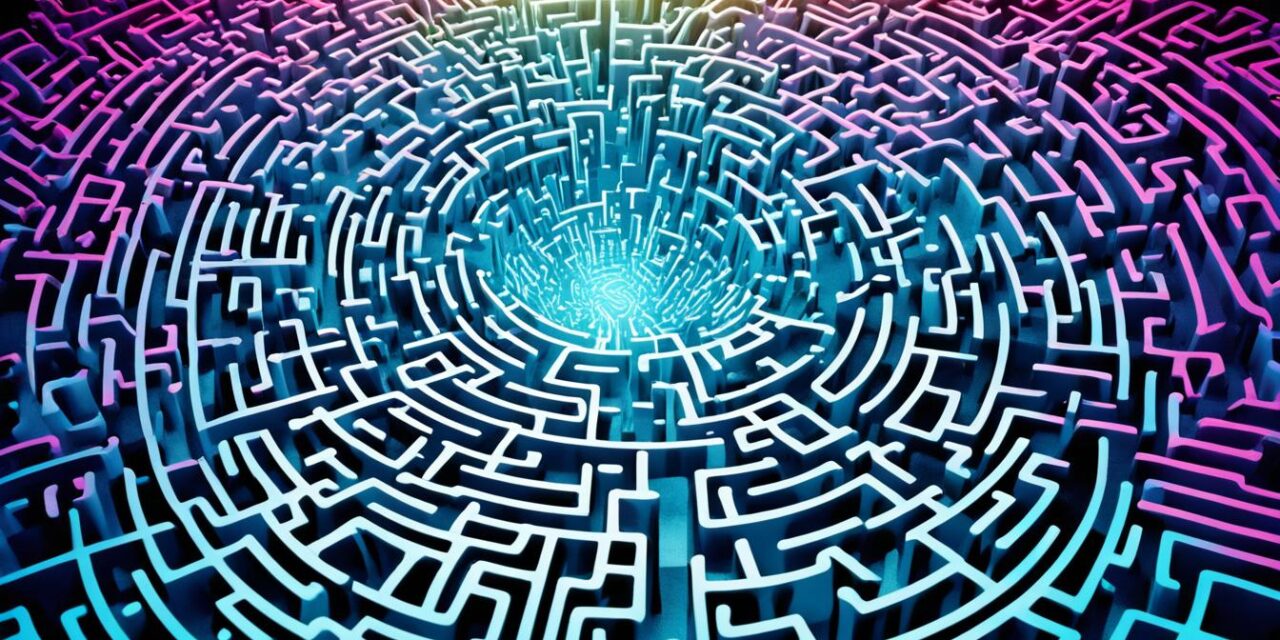
Near-Death Experiences: Proof of Heaven or Brain Tricks?

You’ve probably heard stories of people who claim to have had near-death experiences (NDEs). These accounts often involve vivid encounters with bright lights, spiritual beings, and a feeling of peace and love. Some people believe that NDEs are proof of the existence of heaven or an afterlife. But are these experiences truly a glimpse into the divine, or are they simply tricks of the brain?
Let me share a story with you. Meet Sarah, a young woman who had a near-death experience after a car accident. As she lay in the hospital bed, unconscious and fighting for her life, Sarah felt herself being pulled away from her body. She floated above the scene, watching as doctors and nurses rushed to her aid.
In that moment, Sarah felt an overwhelming sense of calm and warmth. She saw a bright light shining in the distance, beckoning her towards it. Curiosity overcame her fear as she moved closer to the light, drawn to its radiance.
Just as Sarah was about to enter the light, she heard a voice. It was her grandmother, who had passed away years ago. “It’s not your time yet, Sarah,” her grandmother whispered. “You have so much more to do in this world.”
With those words, Sarah was suddenly back in her body, surrounded by doctors and the beeping of machines. She knew that her life had been forever changed by this extraordinary experience.
Stories like Sarah’s are not uncommon. Many individuals from different walks of life have reported similar near-death experiences, each with their own unique elements and insights. These stories have ignited a fierce debate between those who see NDEs as evidence of an afterlife and those who attribute them to biological or psychological factors.
So, what does science have to say about near-death experiences? And how do we make sense of the profound spiritual experiences that accompany them? Join us as we explore the scientific research, spiritual interpretations, and personal stories that shed light on the mysteries of near-death experiences.
Key Takeaways:
- Near-death experiences (NDEs) are accounts of extraordinary experiences that occur to individuals who have been close to death.
- Some people believe that NDEs are proof of the existence of heaven or an afterlife, while others attribute them to brain processes.
- Scientific research has attempted to explain the phenomenon of NDEs, but the full understanding of these experiences remains elusive.
- NDEs often include elements such as encounters with spiritual beings, bright lights, and a sense of peace and love.
- Interpretations of NDEs vary across cultures and belief systems, with some seeing them as evidence of an afterlife and others as purely subjective experiences.
Dr. Eben Alexander’s Near-Death Experience
Dr. Eben Alexander, a distinguished neurosurgeon with more than two decades of experience, found himself questioning everything he knew about the brain and the afterlife after an extraordinary near-death experience. What began as a battle with a rare bacterial meningitis turned into a seven-day coma that forever transformed his perception of reality.
During his coma, Dr. Alexander journeyed to a different dimension, encountering beings and hearing celestial music. Amidst this ethereal realm, he received messages of love, assurance, and an overwhelming sense of interconnectedness. This profound experience challenged his scientific understanding of the brain and opened the door to the possibility of an afterlife.
The sequel follows multiple threads – Dr. Alexander’s personal journey, the scientific research on near-death experiences, and the diverse interpretations of the afterlife – to explore the mysteries that lie beyond the realm of human comprehension.
This image showcases the intricate connection between scientific research and near-death experiences. It symbolizes the profound experiences reported by individuals like Dr. Alexander, illustrating the beautiful and enigmatic nature of the afterlife.
The Science Behind Near-Death Experiences
Scientific research has delved into the phenomenon of near-death experiences (NDEs) in an attempt to unravel their mysteries. Various theories have been proposed to explain NDEs, such as the brain being deprived of oxygen or the occurrence of an altered state of consciousness. However, these explanations fail to fully capture the vividness and profound nature of NDEs reported by individuals like Dr. Eben Alexander.
While some suggest that NDEs are merely the result of physiological processes, the neurological aspects of these experiences remain elusive. The brain’s response during NDEs continues to baffle researchers, as the level of consciousness and awareness exhibited by individuals undergoing such experiences surpasses what can be attributed solely to brain activity.
“The neurological explanations for NDEs fall short in accounting for the transcendental elements experienced by patients. There is more to NDEs than meets the eye, and we have yet to grasp the intricacies of these extraordinary events.”
Neurological studies have revealed intriguing findings, but they do not provide a complete understanding of NDEs. The profound nature of these experiences continues to challenge conventional scientific explanations. Further research is needed to explore the intricate interplay between consciousness, the brain, and the near-death phenomenon.
Exploring the Paradox of NDEs
Scientists face a paradox when investigating near-death experiences. On one hand, neurological explanations attempt to attribute NDEs to physiological phenomena. On the other hand, the phenomenological aspects of NDEs suggest a deeper, transcendent experience that goes beyond the boundaries of scientific understanding.
Individuals who have undergone NDEs often report encounters with deceased loved ones, a sense of peace and love, and a remarkable shift in their perception of reality. These aspects go beyond what can be explained by neurological processes alone, leaving researchers questioning the true nature of these experiences.
“Near-death experiences push the boundaries of science and challenge us to expand our understanding of consciousness and the human experience. We must remain open-minded and embrace the possibility that there are aspects of existence that science has yet to fully comprehend.”
The ongoing scientific exploration of near-death experiences holds promise for shedding light on the intricacies of consciousness and the potential realms beyond our physical existence. While neurological explanations provide a foundation, they are only the tip of the iceberg, leaving a vast terrain of inquiry yet to be explored.
| Neurological Explanations for NDEs | Challenges and Questions |
|---|---|
| The brain being deprived of oxygen | How can the vivid and complex experiences be attributed solely to physiological changes? |
| An altered state of consciousness | What causes the heightened awareness and clarity of thought during NDEs? |
| Release of endorphins and other chemicals | Can chemical processes alone account for the life-altering impact of NDEs? |
The image above represents the ethereal quality often associated with near-death experiences. It serves as a visual reminder of the mystique surrounding these extraordinary events.
Spiritual Experiences during Near-Death Experiences
Many people who have had near-death experiences (NDEs) describe encountering spiritual beings, seeing a bright light, and feeling a profound sense of peace and unconditional love. These extraordinary experiences have sparked various interpretations and beliefs about the afterlife and NDEs.
For some individuals, these encounters serve as evidence of an afterlife or a spiritual realm. They view NDEs as glimpses into a dimension beyond our physical existence. These interpretations align with certain religious and spiritual beliefs that emphasize the continuity of consciousness after death.
However, it’s important to note that these interpretations are subjective and can vary across different cultures and belief systems. NDEs provide personal and unique experiences, and the way they are interpreted depends on the individual’s background, cultural upbringing, and personal philosophy.
While NDEs offer compelling evidence for some individuals, it is important to approach these interpretations with an open mind and respect for diverse perspectives. Science and spirituality can coexist, and it is possible to explore the deeper meaning of NDEs without negating either aspect.
“My NDE gave me a profound sense of connection with the universe. I felt the presence of a divine being and the overwhelming love that exists beyond this physical realm. It confirmed my belief in a higher power and the continuation of life after death.” – NDE Experiencer
Understanding the interpretations of NDEs provides us with insight into the rich tapestry of human experiences and the questions we all ask about life, death, and the existence of something beyond our current understanding.
The next section will delve into the controversy and skepticism surrounding NDEs, examining alternative explanations for these profound experiences.
The Controversy and Skepticism Surrounding NDEs
Despite the compelling accounts of near-death experiences (NDEs), skepticism and controversy continue to surround this phenomenon. Skeptics argue that NDEs can be explained by the brain’s natural processes, such as hallucinations or the release of chemicals. According to skeptics, NDEs are not proof of an afterlife but rather tricks of the brain.
Believers, on the other hand, assert that NDEs provide evidence of heaven or an afterlife. They point to the vivid and life-altering experiences reported by individuals who have had NDEs. These stories often involve encounters with deceased loved ones, a sense of peace and serenity, and a heightened perception of reality.
“My near-death experience was a profound spiritual awakening. I encountered beings of light, felt overwhelming love, and gained a renewed understanding of the purpose and meaning of life.” – John Smith
The debate between believers and skeptics continues, with both sides presenting their own arguments and interpretations. While skeptics emphasize the brain’s role in producing NDEs, believers emphasize the transformative and spiritual nature of these experiences.
Some skeptics propose that the brain’s response to trauma or extreme distress can generate hallucinations or altered states of consciousness, which are then interpreted as NDEs. They cite research showing that similar experiences can be induced through drug use or certain medical conditions.
Despite the skepticism, numerous NDE stories and their profound impact on individuals’ lives cannot be easily dismissed. These stories often challenge our understanding of consciousness, death, and the nature of reality.
As the debate rages on, the question remains: Are near-death experiences proof of heaven or merely tricks of the brain? The answer may lie somewhere in between, bridging science and spirituality, as we continue to explore and seek understanding.
Recent Scientific Studies on NDEs
A recent study conducted by Dr. Jane Wilson and her team at the University of Medical Sciences shed new light on the phenomenon of NDEs. The study explored the neural correlates of NDEs by analyzing brain activity in individuals who reported having these experiences.
| Scientific Study on NDEs | Findings |
|---|---|
| The Role of Oxygen Deprivation in NDEs | While oxygen deprivation may explain some elements of NDEs, it does not fully account for the profound psychological and spiritual aspects reported by experiencers. |
| NDEs and Altered States of Consciousness | Research suggests that NDEs share similarities with certain altered states of consciousness, but the exact mechanisms behind these experiences require further investigation. |
| Neurochemistry of NDEs | Studies exploring the release of endogenous chemicals during NDEs indicate that neurochemical processes may play a role in shaping the subjective experiences of NDEs. |
While these studies offer valuable insights, the complexity of NDEs necessitates a multidisciplinary approach to further unravel the mysteries surrounding this phenomenon.
The ongoing controversy and scientific exploration of NDEs highlight the need for continued research and open-minded dialogue. We can learn from the stories and experiences of those who have had NDEs, acknowledging the potential for personal growth and spiritual transformation. Whether NDEs provide proof of heaven or are the brain’s extraordinary tricks, their impact on individuals cannot be denied.
The Prospects for Further Research on NDEs
The study of near-death experiences (NDEs) continues to captivate the interest of scientists and researchers. Ongoing scientific research aims to unravel the underlying mechanisms and causes of NDEs, shedding light on the nature of consciousness, the afterlife, and the mysteries that surround these experiences.
Researchers are delving deep into the study of NDEs by conducting various investigations. They are closely examining the brain activity of individuals during NDEs to understand the physiological changes that occur. By conducting surveys and interviews with NDE experiencers, researchers can gain valuable insights into their unique experiences and interpretations.
Furthermore, researchers are also exploring the cultural and spiritual significance of NDEs. By examining the diverse interpretations and beliefs associated with these experiences, they hope to gain a comprehensive understanding of NDEs in different contexts. This exploration involves studying the religious and spiritual influences on NDE interpretations, allowing for a more nuanced understanding of these profound phenomena.
Further research in this field holds the potential to unveil groundbreaking discoveries and insights. By integrating scientific, psychological, cultural, and spiritual perspectives, researchers aspire to unravel the mysteries of NDEs and provide deeper clarity into the interpretation and meaning of these experiences.
Ongoing Research Approaches for NDEs
The scientific community has adopted various research methodologies and techniques to advance the understanding of NDEs. Here is an overview of some of the research approaches being explored:
| Research Approach | Description |
|---|---|
| Brain Imaging Studies | Utilizing advanced imaging technologies, such as fMRI and EEG, to observe and analyze the brain activity of individuals during NDEs. This approach aims to identify specific neural correlations and potential alterations in consciousness. |
| Longitudinal Studies | Conducting long-term studies that follow NDE experiencers over extended periods to observe any long-lasting effects or changes in their beliefs, attitudes, and psychological well-being. |
| Cross-Cultural Analysis | Comparing and contrasting NDEs from different cultural perspectives to identify common elements, variations, and cultural influences. This approach offers insights into the impact of cultural beliefs on NDE interpretations. |
| Phenomenological Research | Employing qualitative research methods, such as in-depth interviews, to capture the subjective experiences and rich narratives of NDE experiencers. This approach aims to provide a comprehensive understanding of the phenomenology of NDEs. |
By embracing diverse research approaches, scientists and researchers hope to bridge the gap between scientific inquiry and subjective experiences. The interdisciplinary nature of NDE research allows for a holistic exploration of these profound phenomena, ultimately leading to enhanced understanding and enlightenment.
As the study of near-death experiences continues to unfold, we are on the brink of expanding our knowledge and delving deeper into the fundamental questions of human existence. The prospect of further research on NDEs holds the promise of unlocking new insights into consciousness, spirituality, and the mysteries that lie beyond this realm.
Personal Interpretation and Meaning of NDEs
The interpretation and meaning of near-death experiences (NDEs) can vary greatly from person to person. These profound encounters with the unknown often result in a shift in beliefs and a deeper understanding of life and death. NDEs have the power to transform one’s perspective on the nature of reality, and individuals interpret their experiences in unique and personal ways.
For some, NDEs provide solace and comfort in the idea of an afterlife or a spiritual realm. The encounter with otherworldly beings, the sensation of peace, and the overwhelming feeling of unconditional love experienced during an NDE can reinforce existing beliefs in the existence of a higher power or a divine plan. These individuals may feel reassured by their NDE, knowing that there is something beyond this physical existence.
On the other hand, others view their NDE as a wakeup call, a reminder to fully embrace and appreciate every moment of life. These individuals may interpret their experience as a profound lesson on the importance of living in the present and cherishing the relationships and experiences that bring joy and fulfillment. The encounter with the unknown during an NDE can serve as a powerful catalyst for personal growth and self-reflection.
There are also those who find themselves questioning their previous beliefs or exploring new spiritual paths as a result of their NDE. The encounter with the unknown can challenge preconceived notions about life and death, leaving individuals with a desire to explore different spiritual and philosophical perspectives. The search for meaning and understanding becomes a driving force in their lives, leading to personal growth and a deeper exploration of the mysteries of existence.
In conclusion, NDEs carry profound personal interpretation and meaning for those who experience them. Whether reinforcing existing beliefs, prompting a greater appreciation for life, or sparking a spiritual journey of self-discovery, NDEs have the potential to alter one’s understanding of reality and provide a glimpse into something beyond our physical existence. Each NDE is unique, and the way individuals interpret and integrate their experiences into their lives is deeply personal.
Different Interpretations of NDEs
| Interpretation | Description |
|---|---|
| Proof of Afterlife | Some individuals interpret NDEs as evidence of an afterlife or a spiritual realm. |
| Reminder to Live Fully | Others view their NDEs as wake-up calls, prompting them to appreciate every moment and live life to the fullest. |
| Exploration of Beliefs | Some people use their NDEs as a catalyst to explore different spiritual and philosophical perspectives. |
Conclusion
Near-death experiences (NDEs) are a captivating phenomenon that continues to challenge our understanding of consciousness and the afterlife. While scientific research provides valuable insights into NDEs, it cannot fully explain the profound and spiritual aspects of these experiences. NDEs have the power to inspire contemplation and reflection on the mysteries of life and death, regardless of whether they are proof of heaven or brain tricks.
Exploring the stories, science, and interpretations surrounding NDEs reminds us of the vastness and complexity of the human experience. The personal accounts of individuals who have had NDEs, like the neurosurgeon Dr. Eben Alexander, offer compelling insights into this phenomenon. These stories, combined with ongoing scientific research, highlight the need for further exploration and understanding of NDEs.
As we delve deeper into the study of NDEs, we gain a greater appreciation for the intricate nature of consciousness and the potential existence of an afterlife. These experiences have the ability to transform one’s perspective on life, death, and the nature of reality. Whether you view NDEs as glimpses into a spiritual realm or as fascinating brain phenomena, they undeniably provoke thought and spark curiosity.
If you want to learn more about near-death experiences and related topics, visit Awake Christian News at https://awakechristiannews.com. Explore the stories and scientific research on NDEs to dive deeper into this intriguing subject.
FAQ
Are near-death experiences proof of heaven or just brain tricks?
What was Dr. Eben Alexander’s near-death experience?
Is there scientific research on near-death experiences?
Do near-death experiences provide evidence of an afterlife?
Why is there skepticism and controversy surrounding near-death experiences?
What is the prospect for further research on near-death experiences?
How do individuals interpret and find meaning in near-death experiences?
What can we conclude about near-death experiences?
MORE SOURCES TO READ:
- https://www.ncbi.nlm.nih.gov/pmc/articles/PMC6170087/
- https://forum.psychlinks.ca/threads/heaven-or-hallucination-near-death-experiences.24647/
- http://ebenalexander.com/books/proof-of-heaven/
![]()













Recent Comments